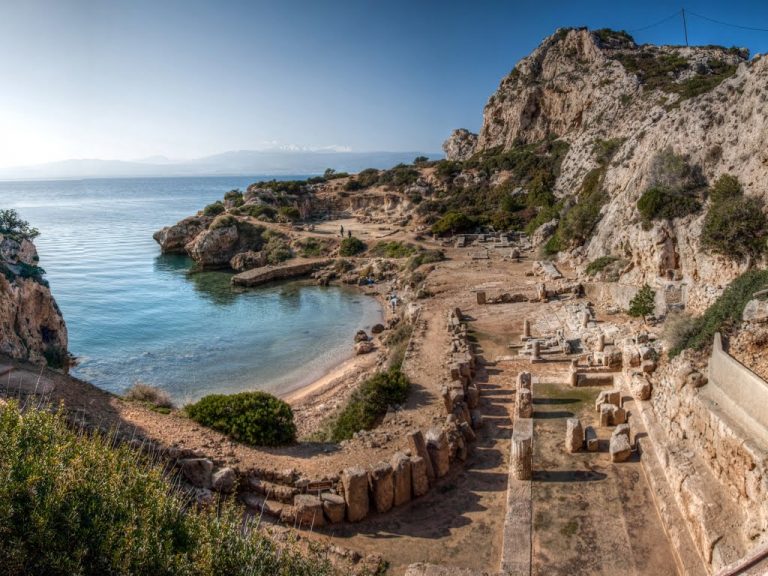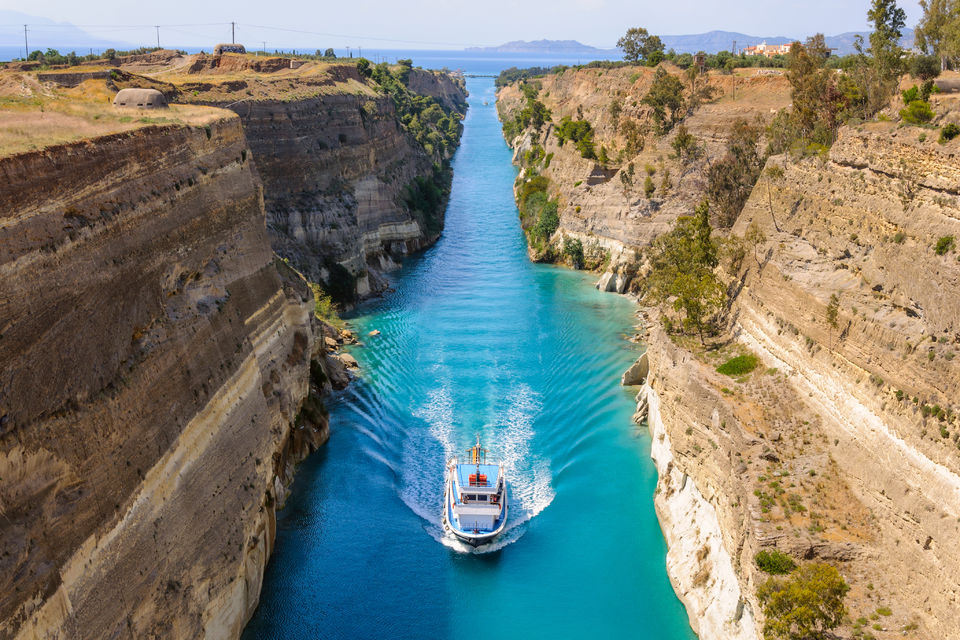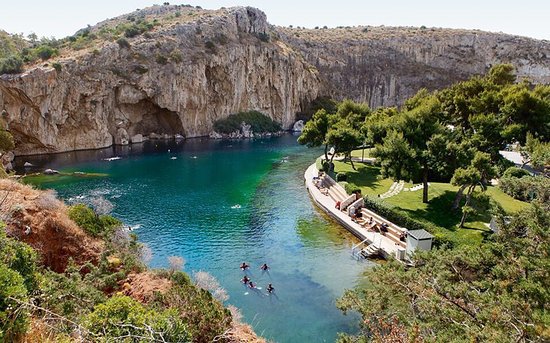Loutraki is a vibrant seaside resort and spa town, internationally known for its thermal springs! It is located at the foot of the Geraneia mountain range, on the northern arm of the Corinthian Gulf, less than a 90-minute drive from Athens and about fifteen minutes from the town of Corinth. The waters of Loutraki, both its thermal and mineral water springs, have been famous since Antiquity. At the time, the town was called Thermai in honour of Artemis Thermia, protectress of hot springs.

In modern times, Loutraki has developed as a favourite tourist destination since its thermal springs were confirmed as having therapeutic benefits in the middle of the nineteenth century. In addition to the various spas, the town offers a host of other attractions nearby that are definitely worth a visit:
- The Heraion, a sanctuary dedicated to the goddess Hera at the Perachora peninsula, is dated to the sixth century BCE and boasts a plethora of unique architectural elements.

- The Isthmus of Corinth, located to the south of the city of Loutraki, is a late nineteenth-century manmade canal that separated the Peloponnese from mainland Greece, cutting navigation times from the Corinthian Gulf to the Saronic to a fraction of the time originally necessary. Today, it is the second most visited landmark in Greece after the Athenian Akropolis.

- The Diolkos, remnants of which are still visible on the outskirts of the city, was an ancient attempt at bypassing the circumnavigation of the Peloponnese. Digging a navigable canal the size of the modern Isthmus lay outside the ancients’ skillset at the time. Instead, they had devised a system with ramps and pulleys, on which ships were carried between the two Gulfs.
- The archaeological site of Isthmia and the Archaeological Museum of Isthmia. Isthmia was an important sanctuary of the god Poseidon, and the place where the panhellenic Isthmian Games were held. The Isthmian Games were second in importance only to the Olympics. The Museum exhibits important artefacts from both the sanctuary and the ancient port of Kenchreai, located at the site of the modern village with the same name.
Other important sites for history lovers include the newly excavated Roman villa in Katounistra, and the early Geometric site of ancient Krommyon with its mysterious theatre-like structure in Agioi Theodoroi.
Those interested in religious architecture will find a number of important Byzantine and later churches in the area:
- The Holy Church of Saint Andreas was built in 1345 at the order of the Byzantine Emperor John Katakouzenos.
- The monastery of Osios Patapios, located 14km to the north of Loutraki, holds the relics of the saint and offers breathtaking views over the city.
- The holy chapel of Agioi Theodoroi was built using spolia from the nearby settlement of ancient Krommyon.
- Τhe basilica of Agios Dimitrios, dated to 1750, is decorated with wall paintings of exquisite craftsmanship. It is located 8km along the road connecting Loutraki with Perachora.
Nature lovers will also not want for things to explore:
- Enjoy your drink at the artificial waterfalls, next to the Old Loutraki Thermal Spa, surrounded by trees, water sounds and a magnificent view of the sea.
- Take a swim in the peaceful waters of the Lake of Vouliagmeni.

- Visit the impressive working lighthouse of Heraion, on the way to Lake Vouliagmeni.
- Hike to the Sousaki volcano, a dormant volcano with significant mudpot activity. Its last associated eruption, which was minor, was in 1997.
Last but not least, one of the most popular tourist attractions of the city is the Club Hotel Casino Loutraki. The first casino to be inaugurated in Greece in 1928 and, currently, the largest in Europe re-opened in 1995 and has since been offering premier services as a hotel, casino and conference centre.
You can find more information at: www.visitloutraki.com
Text: Margarita Lianou














